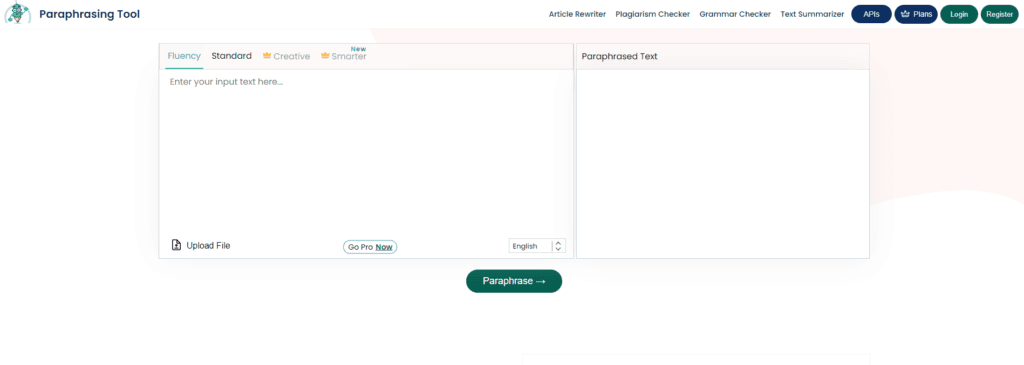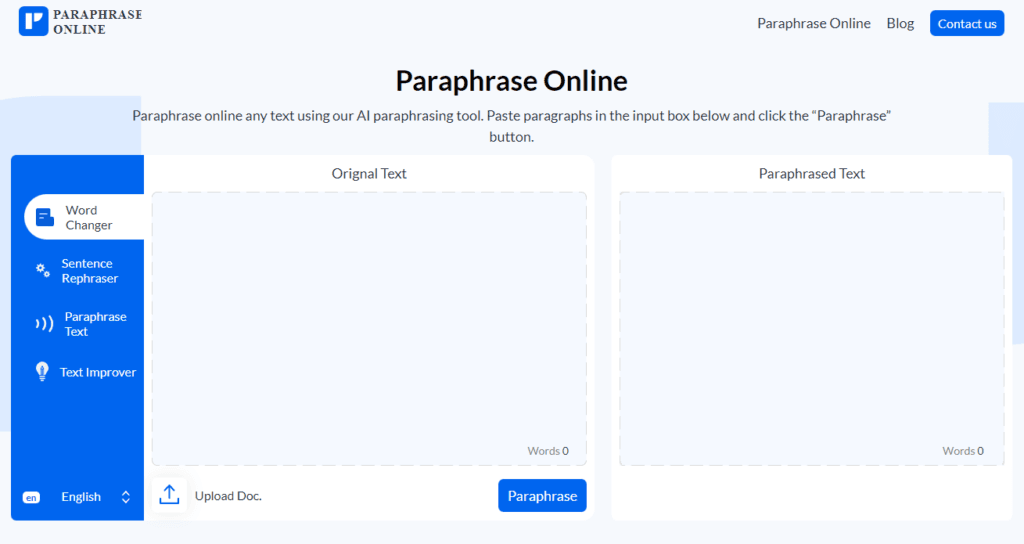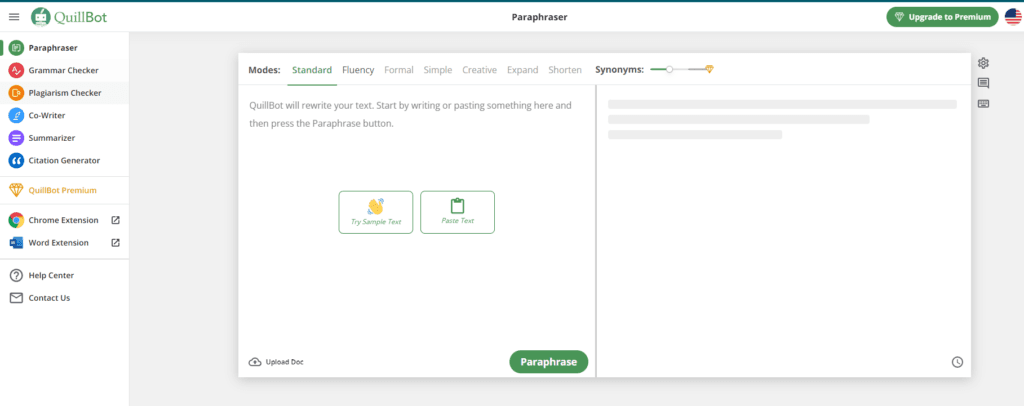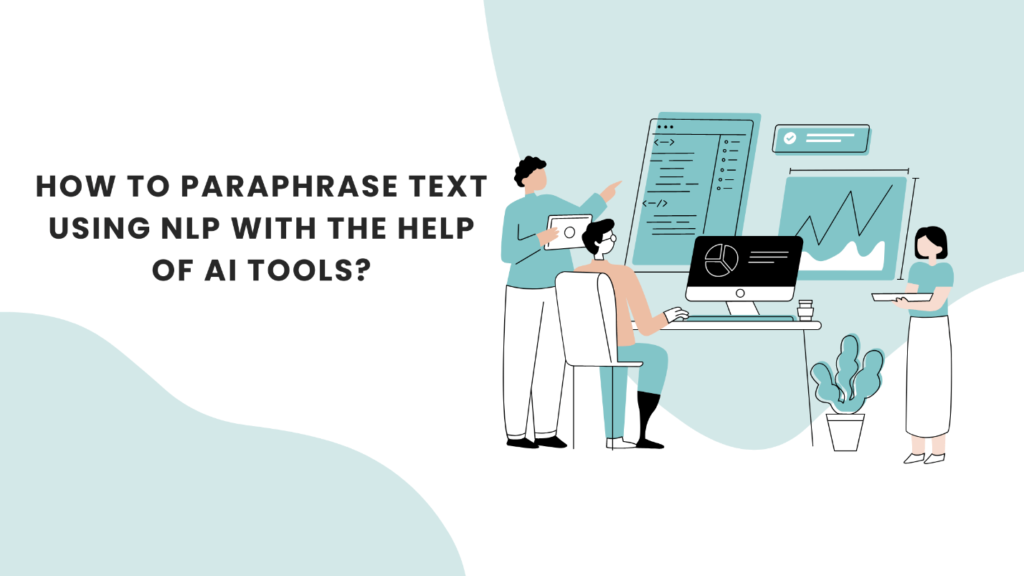NLP and AI can be used to automatically create accurate and meaningful paraphrases of any given text, which can be incredibly useful for a range of applications.
In this article, we will explore the various techniques used to paraphrase text using NLP and AI tools, and how these tools can be used to simplify and expedite the process.
Table of Contents
What is Paraphrasing?
Paraphrasing is the process of rewriting something in your own words while maintaining the same meaning. It is typically used to clarify or summarize a text, but can also be used to create a new text with the same meaning as the original.
For example:
Original Sentence: The feline was scurrying about the home.
Paraphrased: The cat was running around the house.
In short, paraphrasing a sentence could involve changing the sentence structure, replacing words with synonyms, etc.
Read: Free PHP, HTML, CSS, JavaScript / TypeScript Editor
Overview of Natural Language Processing and Artificial Intelligence
Natural Language Processing (NLP) and Artificial Intelligence (AI) are two interrelated fields of computer science.
NLP is an area of computer science and artificial intelligence concerned with the interactions between computers and human (natural) languages. NLP enables computers to understand, interpret, and manipulate human language and is used in various applications such as automated customer service, sentiment analysis, and much more.
AI is a broad field of study that focuses on the development of machines that can think and act like humans. AI applications include robotics, automatic planning, speech recognition, and deep learning. It can be used to develop computer programs that can solve complex problems and make decisions.
How to Paraphrase Text Using NLP with the Help of AI Tools
Here you will find how to paraphrase text using NLP and AI tools. Let’s start:
Step 1: Identify the Text You Want to Paraphrase
The first step in paraphrasing text is to identify the text you want to paraphrase. This text should be one that you want to communicate differently, either to improve readability or to give a new look.
Step 2: Choose an NLP and AI Tool
Once you have identified the text you want to paraphrase, the next step is to choose an NLP and AI tool to help you. This is the trickiest part of the whole process.
Although there are a lot of paraphrasing tools that you can find on the internet, a very small percentage of them are usable. A lot of them can ruin the context of the entered text by making nonsensical changes.
In our experience, we’ve found the following tools to be quite smart and intelligent:
- Paraphraser.io
- Quillbot
- Paraphraseonline.io
We’ll give some examples using these tools later to show how they work and what sort of outputs they provide.
Of course, if you want to go ahead and pick a tool of your own, you can do so by all means. Here are some things that you should look for in your contemplated tool to see if it is worth using or not:
- It should ideally be free to use
- It should have a strong user base
- It should incorporate GPT-3 into its work. You can determine this easily by reading the content published on the tool page.
- It should provide options to paraphrase the text in multiple ways. In a lot of tools, this feature is available in the form of “modes”.
Step 3: Create Your Paraphrased Text
Once you have chosen an NLP and AI tool, the next step is to create your paraphrased text. This can be done by inputting the original text into the tool and letting it generate a new version.
If the tool you’ve chosen comes with different modes, then this is the part where you will have to select one.
Some tools also allow you to customize the output, so you can make changes to the generated text to better suit your needs.
Step 4: Review and Edit the Result
The final step in the process is to review and edit the result. Depending on your chosen tool, the output may need some tweaking to make it more accurate or readable.
Therefore, it is important to take the time to review the output and make any necessary changes.
Examples of Paraphrasing with AI Tools
While we did highlight the main steps of this process in the section above, here are some examples of paraphrasing using AI tools. We will be using the same tools that we listed in our recommendations above.
1. Paraphraser.io
Example:
Original Sentence: “A good man is hard to find.”
Paraphrased Sentence: “It’s hard to find a good man.”

Here is the first example using Paraphraser. As you can see in the image as well as the text above, the tool smartly altered the text by switching the placement of the words “good man” and “hard”. Noteworthy is the fact that while there have been no changes to the actual words, the switcheroo alone makes the line look different from its actual form.
2. Paraphraseonline.io
Example:
Original Sentence: “The quick brown fox jumps over the lazy dog.”
Paraphrased Sentence: “A swift brown fox leaps over a lazy dog.”

Next up, let’s look at an example using the Paraphrase Online tool. In the example, you can see that the tool successfully changed some of the words in the input with their synonyms without disturbing the context.
3. Quillbot.com
Example:
Original Sentence: “The journey of a thousand miles begins with a single step.”
Paraphrased Sentence: “One step is all it takes to go a thousand miles.”

One of the remarkable things about the output provided by Quillbot is the depth of the changes. In other words, you will see that the phrase “all it takes” is written nowhere in the input. However, by understanding the meaning of the text, the tool automatically adjusted it.
Conclusion
Paraphrasing text using NLP with the help of AI tools is a useful technique for improving the accuracy and speed of the writing process. AI-based NLP tools can help you to create more accurate and consistent paraphrased versions of any text, allowing you to quickly and easily restructure ideas, reword sentences, and replace words with synonyms.
With the help of AI tools, you can easily paraphrase text to create more natural and grammatically correct texts. This process can save you time and help you communicate more effectively and accurately.
